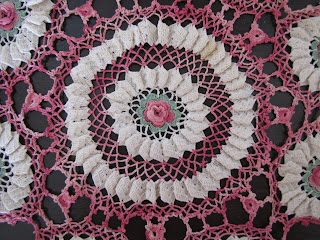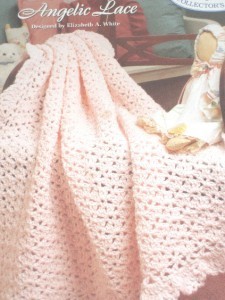You've heard the saying "two heads are better than one." This is especially true when it comes to crochet patterns; my testers often find things that I simply overlook. I always read through each pattern several times, but sometimes, I just do not see a mistake or typo. And at times instructions that seem perfectly clear to me will be incomprehensible to someone else. I now have 3 different crocheters test each one of my patterns, in the hope that if one doesn't catch something, another one will, and this is often the case.
I never expect my testers to fix any problems they may find in one of my patterns. If they believe they have found an error, or if anything is not clear to them, they notify me. I then check the pattern and make any corrections or revisions, and send the corrected instructions back to the tester. They let me know when they have finished a pattern, and often send me pictures of their finished items.
Here is the actual check list I give to all of my testers:
Check List for BellaCrochet Patterns
Skill Level:
Most of my patterns are rated Intermediate, but I usually do not list this in the actual pattern.
Do you agree with the skill level
(if listed,) or do you think it is harder or easier? If you have done any of my patterns in the past, do you think this one is significantly harder or easier than others
(should I give it a different skill level than Intermediate?)
Size:
Did your item turn out the size listed?
Gauge:
NOTE: I do not give gauge on my thread patterns, as I find it is too hard to give an accurate one, and it is not critical on most of the things I design.
If given
(and it usually is not!) is it correct?
If no gauge is given, do you think it needs one?
Materials list:
Is everything you need to make the item listed?
Does it look like there is too much or not enough of a certain color of thread?
Are there things listed you do not need?
Special Stitches:
Are instructions for all Special Stitches used in the pattern given?
Are there Special Stitches listed that are
not used in the pattern?
Do you understand how to make the stitch from the instructions?
Pattern:
Is there a pattern for each piece of the item?
If making more than one of an item
(roses, leaves, etc.), does the pattern tell you to make the correct amount?
Does each pattern tell you what color of thread to use, and is it the correct color?
Are all the rows/rnds numbered correctly?
Does it say to “turn” at the ends of the rows
(if needed)?
Does it tell you to “fasten off” at the end of the last row/rnd?
Do all the repeats work correctly?
Are all * and ( ) included and in the proper position?
Is there anything extra, or weird, like a “fasten off” when you are not changing colors or at the end of the piece?
Is the pattern clear; do you understand what it is telling you to do?
If there are pictures, can you easily see what they are trying to illustrate? Do you think they help make the pattern easier to understand?
Do you see any spelling mistakes? Typos?
PLEASE DO NOT FEEL THAT YOU MUST FIND SOMETHING TO REPORT TO ME. Nothing makes me so happy as getting a report that no errors were found!
Finishing:
Are the finishing instructions clear?
Did your item turn out like the one in the photograph by following the instructions?
Do you need more information on a certain step?
I cannot believe that I only started using testers in 2009. Before that, I agonized over each pattern, and for weeks after each was released I lived in fear of someone finding an error. My testers have given me not only much better and more accurate patterns, but peace of mind. I appreciate them more than I can say!
















